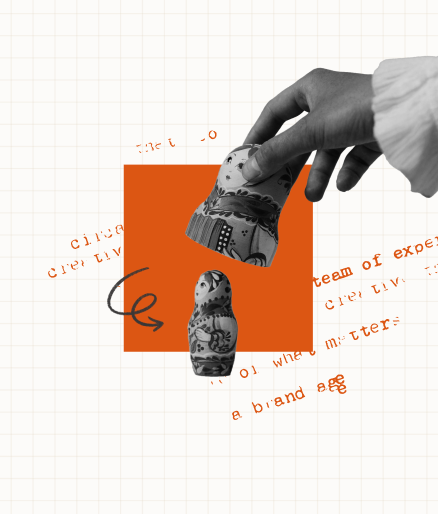
We owe Gino Wickman a thank you. Traction solves a big hurdle when it comes to brand and rebranding strategy. Let us explain.
A few years ago, an insurance group out of North Carolina hired us for a brand refresh. It was a complete overhaul with a new name, brand identity, and messaging — the type of project we love. It was a large organization with hundreds of employees and a group of sixteen decision makers.
We hosted the workshop, presented the first round of creative, and braced ourselves for the typical avalanche of opinions from such a large leadership team that we often receive in our world of brand services. But, instead, we received one clear response… within 24 hours! We were stunned.
The rest of the project proceeded with the same alignment. Fast, exciting, and finished in less than three months. This group was incredible!
Afterwards, we followed up with the marketing director. How were they able to make such quick decisions? And, where do we find more clients like this — people who care about the strategic process behind value-driving brand services, who want to do the deep work in defining their why? She told us that the team had all read Traction and had spent the previous quarter defining their vision, as it’s outlined in the EOS model.
We had never heard of Traction, Gino Wickman, or the EOS process. We didn’t realize there was a business system that started with vision. It was a Eureka moment! Now, we’ve incorporated much of the EOS process into our own brand services framework.
What is Entrepreneurial Operating System (EOS)?
EOS, Entrepreneurial Operating System, is a business framework designed to help entrepreneurs and leadership teams. Created by Gino Wickman and popularized in his book Traction, EOS is built around six key components that ensure clarity, alignment, and accountability across an organization.
The EOS process and brand services go hand-in-hand. Branding and business are intertwined. Maybe it’s possible to do brand work separate from the business, but we can guarantee, it won’t be as impactful.
By considering your brand while applying the EOS process, companies can extend the impact of this management work to create a brand that not only resonates with their audience but also drives long-term success. Plus, you can simplify the brand process and save yourself time and money.
Circa’s EOS-Inspired Secret Recipe for Brand Services
When companies adopt the EOS process, they gain more than just a business management framework—they gain the clarity and alignment needed to build and maximize the return on brand equity. EOS encourages companies to be intentional about their vision, values, and culture, all of which are central to building a strong brand…something we’ve been yelling from the top of our Circa mountain for almost a decade.
Considering this, we put together some simple steps for anyone working on their business, whether they invest in the EOS process or not, and how to align it through actionable brand steps:
Step 1: Craft brand foundational messaging for team alignment.
The right people don’t need additional management or motivation, but they do need clarity. A brand foundation includes the core statement, mission, vision, and values. It ensures your team is on the same page.
We love the EOS process because it ensures that everyone in the organization is on the same page, reducing the risk of misaligned messaging.
Step 2: Define your unique value proposition from your vision.
With a clear vision, companies can communicate their differentiated value–value proposition–more effectively, both internally and externally. This messaging should be simple, clear, and impactful. It can include headlines, body copy, and calls-to-action.
Step 3: Create a brand book for scalability.
As your business grows, your brand needs to stay true to its core values. A brand book includes visual brand identity, logo specifications, color palette, fonts, typography, mockups, and brand messaging. It’s a comprehensive tool for applying your brand to your marketing and communications.
Systemized processes ensure that as companies grow, their brand remains consistent and true to its core values, thus building brand equity–another tenant of the EOS process.
Step 4: Measure your brand data.
Use a monthly report and tools like Google Analytics, SEM Rush, and sales conversion rates to track data. Review the data reports and refine your strategies, ensuring that brand efforts are measurable and results-oriented.
A framework like EOS encourages companies to track data and use it to refine their strategies, ensuring that branding efforts are measurable and results-oriented.
Let us say it again: business strategy and branding go hand-in-hand.
This guide can be a starting point for understanding how a framework like the EOS process influences branding. If you’re currently using EOS or thinking about implementing it, consider one of Circa’s brand packages to translate your work into a new brand identity.
